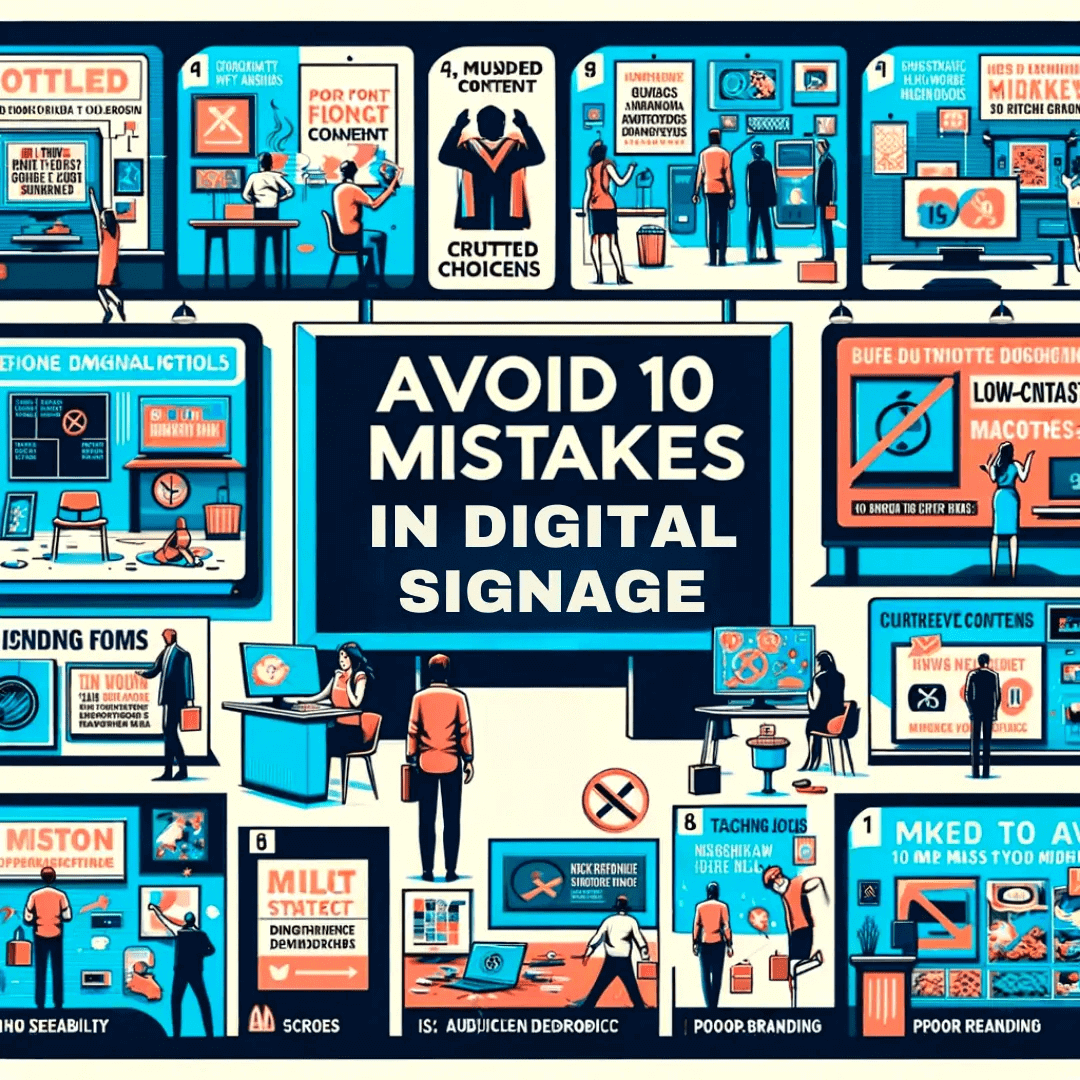Digital signage has become a powerful tool for businesses to engage and captivate their audience. Whether it’s for advertising, information dissemination, or enhancing the overall customer experience, a well-executed digital signage strategy can yield impressive results.
However, the road to success is fraught with potential pitfalls. In this article, we will delve into the common mistakes that can spell disaster for your digital signage strategy, jeopardizing your investment and hindering your goals.
1: Neglecting Content Relevance:
One of the most significant mistakes is not tailoring your content to your target audience. Irrelevant or generic content fails to resonate with viewers, diminishing the impact of your digital signage efforts. Conduct thorough audience research and create content that speaks directly to their needs, preferences, and interests.
2: Poor Design Choices:
Visual appeal is paramount in the world of digital signage. Overcrowded screens, unreadable fonts, and clashing color schemes can turn your message into a visual nightmare. Invest time and resources into professional design to ensure your content is visually appealing, easy to read, and aligned with your brand.
3: Ignoring Location Dynamics:
Placing digital signage without considering the physical environment is a recipe for failure. Factors like lighting conditions, viewing angles, and foot traffic patterns must be taken into account. Failure to do so can result in decreased visibility and reduced impact.
4: Inconsistent Branding:
Maintaining a consistent brand image across all digital signage platforms is crucial. Inconsistencies in messaging, logos, and color schemes can confuse your audience and dilute your brand identity. Establish brand guidelines and adhere to them rigorously.
5: Failure to Update Content:
Static content becomes stale quickly, losing its effectiveness. Failing to update your digital signage content regularly can make your messages irrelevant and bore your audience. Implement a content schedule to keep information fresh, timely, and engaging.
6: Inadequate Technology Integration:
Selecting the wrong hardware or software can hinder the effectiveness of your digital signage. Ensure that your technology choices align with your goals and can support the desired level of interactivity. Regularly update software and firmware to take advantage of new features and security patches.
7: Without proper analytics, it’s challenging to gauge the success of your digital signage strategy. Ignoring metrics such as viewer engagement, conversion rates, and dwell time prevents you from making data-driven improvements. Regularly analyze performance data to refine your strategy and optimize content.
8: Ignoring Maintenance:
Digital signage requires regular maintenance to ensure uninterrupted functionality. Ignoring hardware issues, software glitches, or outdated content can lead to system failures and diminished impact. Establish a routine maintenance schedule and promptly address any technical issues.
9: Lack of Interactivity:
Static content is no longer sufficient in a world where interactivity is expected. Failing to incorporate interactive elements into your digital signage can result in a missed opportunity to engage your audience more deeply. Consider touchscreens, QR codes, or other interactive features to enhance user participation.
10: Disregarding Legal Compliance:
Legal issues can arise if digital signage content violates copyrights, privacy laws, or other regulations. Failing to comply with legal requirements can lead to financial penalties and damage to your reputation. Ensure that your content adheres to all relevant laws and industry standards.



